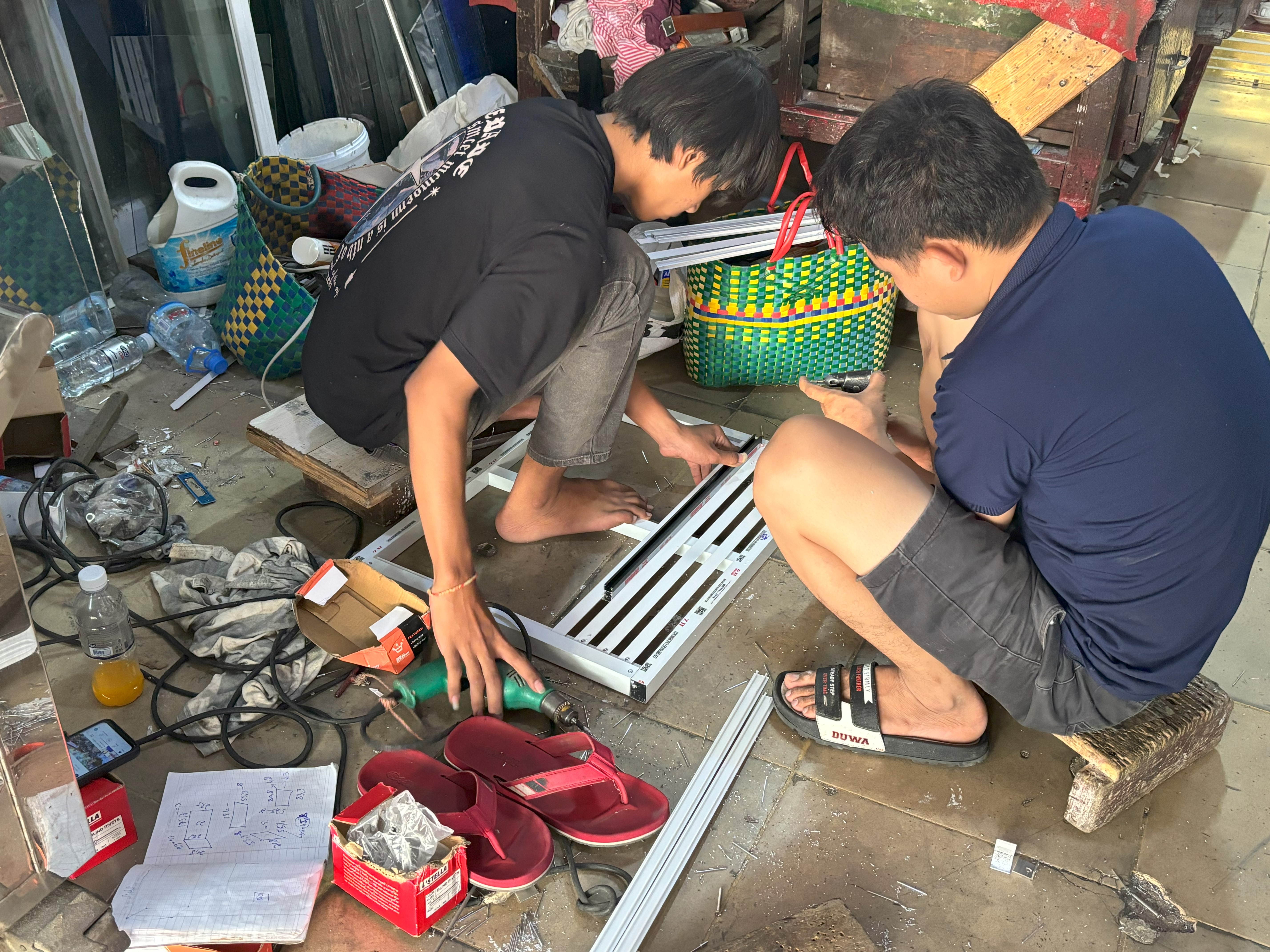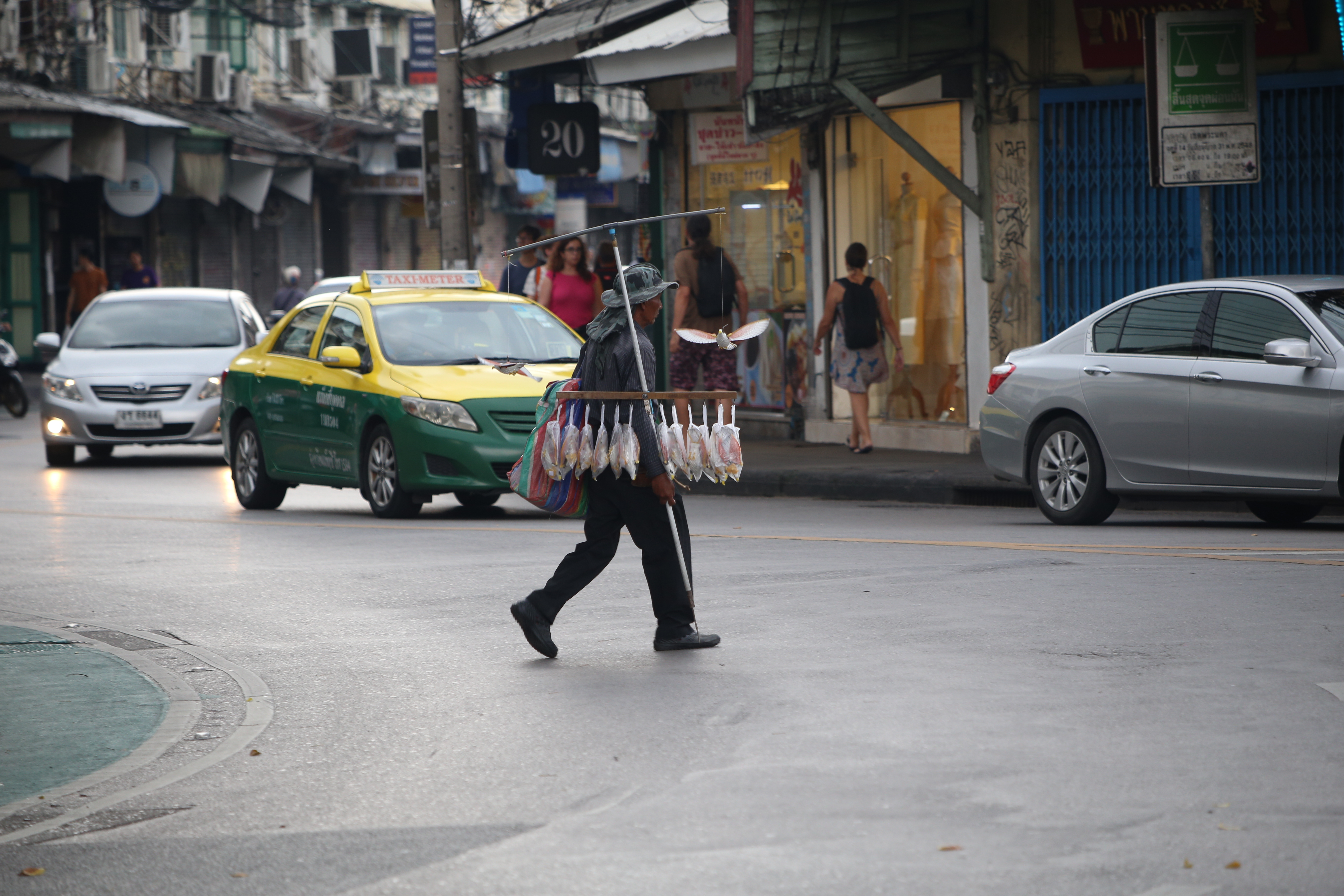Like many teenagers around the world, Ngo started using drugs after being encouraged by his friends. But what separates his experiences in Cambodia from that of a teenager in many other countries is that his friends didn’t promise him a “good time” if he got high with them; rather, they promised that it would help him turn a profit.
Much has been written about the deeply concerning rise of drug use in Southeast Asia, particularly of methamphetamines. When talking about this problem, NGOs and news media have generally focused on the same background issues that lead to drug abuse and addiction in the West, namely poverty, unemployment, and social decay.
While these are certainly factors in Southeast Asia as well, one overlooked aspect is that another factor pushing the region’s youth into methamphetamine use is not poverty, but the opposite: the breakneck speed of the economic boom, where the skyscrapers erupting out of the ground like rice shoots can often cast a long shadow over the people erecting them.
Underneath the international acclaim for the continually rising economic metrics of Southeast Asia, there is a dark side to what the World Economic Forum called “The Dawn of the Asian Century.”
Drugs “are necessary for the work,” said Ngo, who did not give his family name. In a recent interview, the 22-year-old told The Diplomat that he has been working as a manual laborer since he was 15, when he got a job on a construction site.
He said that when he first came to the capital, Phnom Penh, he found that all of his new coworkers at an aluminum works were smoking methamphetamines in a crystallized form known as “ice.” They told him that it would help him get through the long days.
The workshop provided made-to-order aluminum furniture for the city’s restaurants and hotels. In a country where the hospitality sector is estimated to have an astounding 13 percent yearly growth rate, these types of facilities have constant demand. Ngo was assembling furniture for 10 hours a day, 7 days a week.
“When I took it, I didn’t know tiredness,” he said of the drugs.
Pi, a 20-year-old laborer on the same street who also did not want to give his family name, reported taking amphetamines in order to deal with the body pains he gets from his job as a truck loader. He told The Diplomat that he carries hundreds of 20-kilogram cases of beer per day. The beer industry in Cambodia is also experiencing a boom, with an estimated 9 percent yearly growth rate.

Two workers at an aluminum furniture workshop in Phnom Penh, Cambodia, September 29, 2024. (Photo by Josephine Sta Ana Baliling)
These are not isolated incidents. In 2016, a random check by Cambodian officials found that 80 percent of truck drivers were using methamphetamines to stay awake and work longer hours.
Nor is this trend limited to Cambodia. According to academic and medical reports, it is common throughout Southeast Asia, which now produces a large proportion of the world’s amphetamine-type stimulants.
According to the U.N. Office on Drugs and Crime (UNODC), a record 190 tons of methamphetamines were seized in East and Southeast Asia in 2023, the largest amount ever recorded in a single year – and more than four times the amount seized a decade ago. The bulk of this came from Myanmar’s Shan State, where drug syndicates, many based in rebel-controlled regions, enjoy proximity to both Chinese and Southeast Asian drug and precursor markets. As a result, the street price of methamphetamines has collapsed, making it affordable even for poorly-paid laborers.
A study in Thailand found that 73.5 percent of agricultural workers across four regions admitted to having used illicit drugs; the overwhelming drug of choice was methamphetamines. The researchers who conducted the interviews wrote that the workers “use stimulant drugs to increase their productivity, which may give them more income.”
The practice of using methamphetamines has become so commonplace that an Israeli government investigation found that Thai agricultural workers were often smuggling amphetamines into the country with them when they arrived, believing that it was their key to outperforming native workers. It has also become popular throughout Thai society, particularly in the informal economy such as with street sellers, but also including university students who believe it will help them study better.
“So much of Thailand’s economy has been built on endless labor,” said Patrick Meehan, a researcher at the Transnational Institute who has been researching use and production in the region since 2018.
He said that in many industries where workers are paid a meager hourly or piece work wage, they are incentivized to make ends meet by using methamphetamines as performance enhancers.
As a case in point, Meehan referenced the jade pits of northern Myanmar, where workers are required to sift through hauls of mined debris to find pieces of jade, and are paid based on how much they find. The workers only keep a tiny fraction of the value of the jade they scavenge, and so they turn to methamphetamines to help them deal with the endless monotony and increase the amount of jade they are able to find.
Meehan’s research in Myanmar found that it was somewhat commonplace for employers to give their own employees yaba – “crazy medicine” in Thai – a pill containing methamphetamines mixed with caffeine, to keep them working. Sometimes this was done without the employees knowing, by slipping it into their food, or telling them it was a “tonic.” In extreme cases, employers started deducting the price of the drugs from the workers’ paychecks once they had become dependent on it.
Meehan said that there was a difference between users and addicts, with some people that his organization interviewed reporting that they were able to manage their usage and limit it to work, while others spiraled out of control.
The difference between addiction and usage can be very important. A study in Indonesia found that amongst regular amphetamine users, only 7 percent of people showed signs of addiction, and that the average Indonesian amphetamine user took the drug about six times per month. Many reported choosing their usage carefully depending on their workload.
Ngo, the Cambodian furniture builder, said that he and his coworkers pooled together money to purchase methamphetamines 2-3 times per week. He said that for several years, this system worked well for them.
“I felt like I could fly,” he said, “and I could work without stopping.”
But the rush of energy came with downsides. “I felt like a different person,” he said. “I lost control of myself.” The positive effects only lasted a few hours, after which he felt lethargic, and had trouble eating and sleeping, Ngo said. Sometimes he took more to alleviate those effects. Then, the shame kicked in.
“Before, I was like white paper. Now I am like dirty paper,” he said, using a common Khmer expression to refer to his loss of innocence and virtue.
“There is a lot of stigma,” said Meehan, adding that this made it difficult for many addicts to seek help when they feel they can’t stop. He said this was “strange,” considering that the drug is so widely used.

A street vendor in Thailand can work in excess of 15 hours a day. (Photo by Shunsuke Miyatake)
The stigma of recreational drug use is part of why meth producers and distributors market it as a performance enhancer. Methamphetamines are sold online and via corner shops in many parts of Southeast Asia, and marketed much like any other product. By pushing their drugs as a performance enhancer that can increase productivity and prosperity, drug producers are able to overcome some of the stigmas associated with recreational drug use, Meehan said. Though they often know that there is a risk of addiction and health problems, their economic conditions, coupled with the marketing, makes them consider drug abuse as a legitimate economic decision.
“Drug use makes some sense for them,” said Gideon Lasco, a medical anthropologist with the University of the Philippines who specializes in drug issues, in an email.
In his research, Lasco spent time interviewing young men working at ports in the Philippines. He found that methamphetamine use was common among them, and that they seemed well aware of the risks and benefits associated with the drugs, and actively chose to use it in order to boost their productivity. They even referred to it as “Pampagilas,” or “enhancer of skills.”
”Caught in an informal economy that requires them to perform in order to survive, drug use plays a crucial role in their lives – a predicament shared by many young marginalized people around the world,” Lasco wrote in a 2014 article.
Similarly to the case of Thai migrant workers abroad, the borders of Southeast Asia don’t contain the cultural connection to the drug. A report from Spain estimated that 98 percent of the country’s methamphetamine users were Filipinos, who said they needed it to work long hours in kitchens and aboard ships.
However, Lasco also pointed out to The Diplomat that “there is no singular reason” why people use drugs, and that there were often other factors at play, including social pressures and escapism, and that the economic benefits were only one contributing factor. He added that the odorlessness and cheapness of meth made it an attractive recreational drug for many.
The widespread use of methamphetamines across Southeast Asia’s labor sectors reveals a troubling underside to the region’s rapid economic growth. Meth, marketed as a tool for productivity, has ensnared countless workers, turning their labor into an endurance race with devastating personal costs. From Cambodia’s truck drivers to Myanmar’s jade miners, the narrative is consistent: economic pressures push individuals toward drugs as a means of survival. The staggering rates of usage, hidden behind the glittering metrics of economic success, pose a significant challenge to public health, labor rights, and the future stability of Southeast Asia’s workforce.
As this crisis continues to unfold, it is clear that addressing this unique drug epidemic has factors that differentiate it from other drug epidemics, like the United States’ opioid crisis. While the opioid crisis centers on those without stable employment, the methamphetamine crisis in Southeast Asia has strong links to employment and the nature of labor rights. Addressing this growing problem demands a reevaluation of the economic conditions that make drug use a rational, albeit destructive, choice for so many.

































